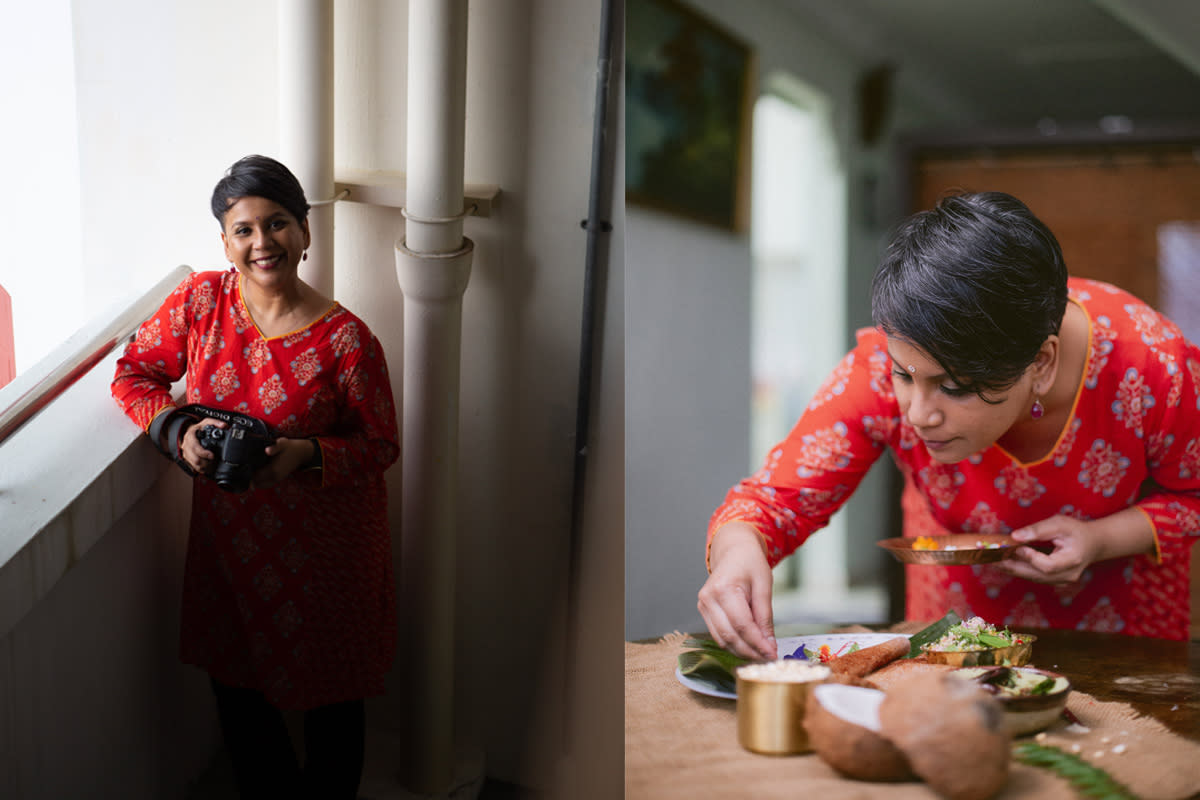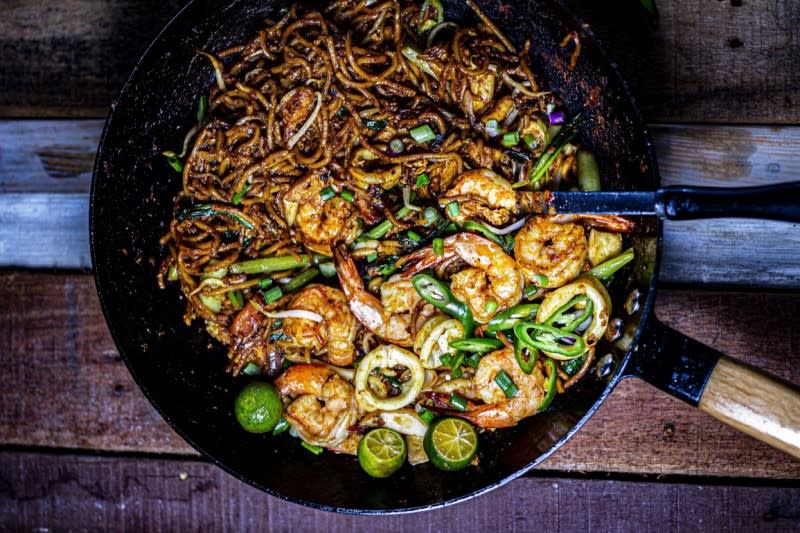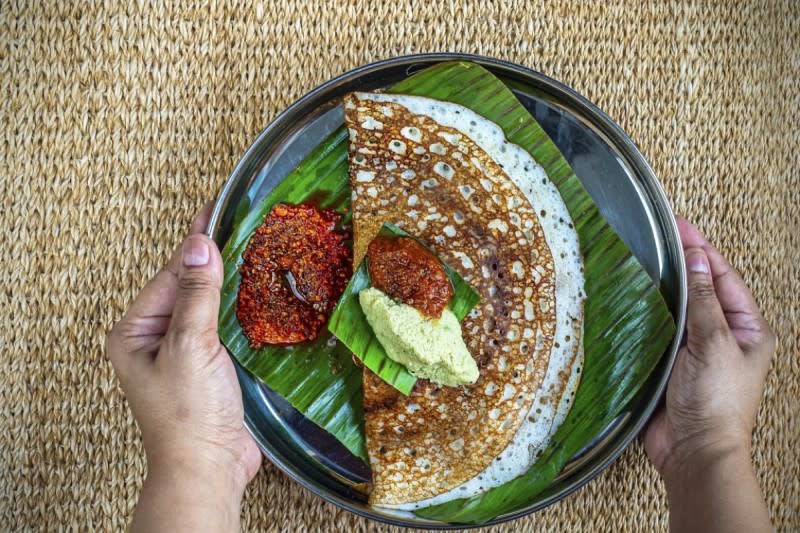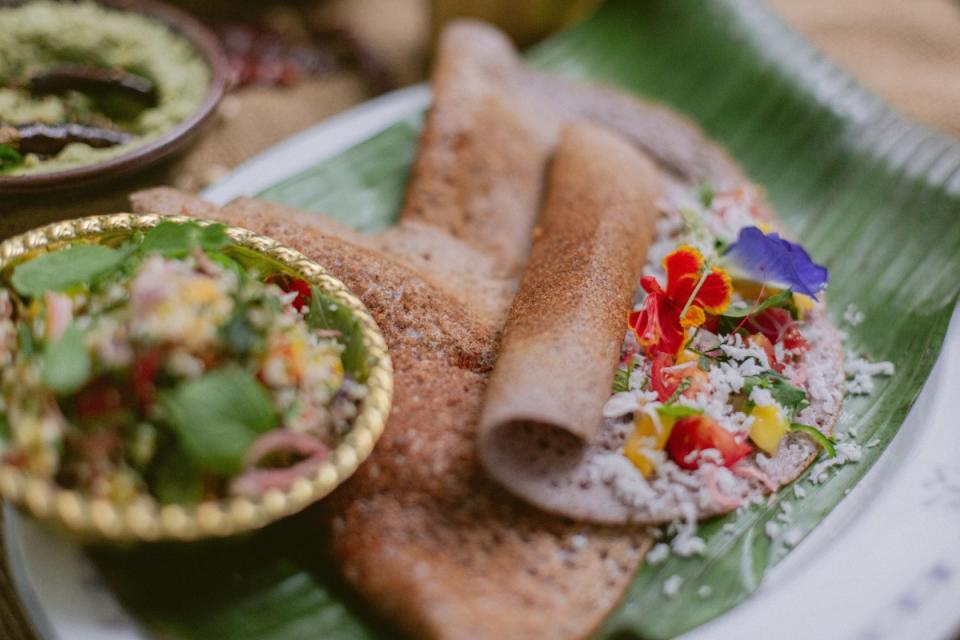INTERVIEW: ‘Thosai Consultant’ Vasunthara — “When I make thosai from scratch, I feel connected to a whole line of women and their wisdom”

SINGAPORE – There has been a lot of talk of late about the intersectionality of food. Being in a country as diverse as Singapore, the toughest thing to do is to be able to identify where on this plate your culture and history tapers off and my creativity begins. But the truth is, the things we eat are often the amalgamation of several cultural origins mixed with a personal interpretation of the cuisine. An interpretation that’s based on the company we keep, the cooking methods we observe, and more often than not, sheer convenience.
Yet, it’s hardly an excuse to not make the effort to understand where the food of our grandfather and grandmother comes from. In the world we live in now, dishes of historical significance tend to take a backseat. Younger Singaporeans prefer celebrating and chasing after the next food trend, choosing instead to cast a side-eye on food they deem less glamourous and less Instagram-friendly—certainly an unfair aspersion without any merit.
It makes what Vasunthara do in preserving Indian and Southeast Asian cuisine and recipes such a precious commodity. Hers is a world of thosai and homemade curry powder, where food is lovingly made from scratch and the effort to preserve these methods of cooking reaches almost a fevered pitch. She speaks passionately about food and memories—almost poetically so—but never veering too far from her original mission of understanding and appreciating the dishes that shaped her childhood and made her the person she is today.

How do you describe what you do to someone you're meeting for the first time?
I’m Vasunthara, a former school teacher and a current full-time tutor. I’m also a passionate home cook who is a little obsessed with reading up on food history and finding my culinary roots in Tamil Nadu, South India. I enjoy travelling with my husband in search of unique foods and cultures and some of my favourite destinations include Kerala, Sri Lanka, Mexico City and Lisbon.
In my spare time, I write and photograph for my blog – Monsoon Table, where I feature recipes and stories with a South Indian and Southeast Asian perspective that I’ve researched through books, journals, and interviews.
What was your childhood like growing up?
My fondest childhood food memories centre around my maternal grandparents’ home in Joo Chiat when I was about 4 years old. I have wonderful memories of eating piping hot idli and thosai daily, as my grandparents used to sell them from their home. Even though I had only spent a few years there, the sights, sounds and smells from that time have left an indelible mark in my memory.
Till today, I can recall the way the kitchen looked, the smell of thosai batter hitting the hot pan, where my grandmother had stashed her large tin of Khong Guan biscuits and the Indian Muslim uncle’s bicycle that was laden with teatime snacks from the bakery nearby. Our annual Deepavali celebrations always kickstarted with the entire family making murukkus and other Indian sweets in that kitchen.

You’ve had a lot of fond food memories as a child. How did this change the way you approach food?
After I got married, I tried to recreate the flavours from my childhood but by then it was too late as my grandmother had Alzheimer’s Disease and couldn’t recall most recipes. From that moment, I knew if I didn’t take an active role in learning to cook traditional South Indian dishes, I would not be able to taste them at all. It was unthinkable to me as it meant losing a significant part of who I was.
In 2018, my grandmother passed away and since then, I’ve been researching and cooking even more South Indian dishes with a greater sense of urgency. The childhood memories formed around my grandparents’ and parents’ dining tables have had the greatest impact in my food philosophy. I strongly believe that the memories made from cooking and eating together go far beyond quelling an immediate hunger—they inform our food choices from young, become the comfort foods we seek as adults, and naturally extend as an expression of our cultural identity.
In your Instagram profile, you said that you're a Thosai Consultant. What does it mean to be a Thosai Consultant? And, perhaps, what advice would you give to aspiring Thosai Kings and Queens everywhere?
I’ve been experimenting with thosai fermentation for a while now, and as an avid Instagram user, I posted my thosai creations to my account. Since then, there have been many requests for a thosai recipe that are beginner-friendly. So, I posted a No-Grind Thosai recipe during the recent Circuit Breaker and many of my followers have gone on to make thosais at home with some encouragement and handholding from me. Hence, I jokingly added the job title of ‘Thosai Consultant’ to my profile.

How did you feel seeing all the positive reception to your Thosai recipe?
It has been a really fun and meaningful experience seeing so many people, who’ve never made thosai before, successfully ferment the No-Grind batter and make perfectly round thosais. There is magic and joy in seeing flour spring to life with natural cultures ‘hidden’ in them and your home.
Having said that, fermentation can be daunting to new cooks who want to be Thosai Kings and Queens. But with the right recipe, techniques, and understanding of what to look out for, it can be a breeze. Like any fermentation, thosai making is a science that can be broken down with detailed explanations of the process. The best part of making your own thosai is being able to modify the ratios and prolong the fermentation time to achieve a more rounded and complex flavour that is hard to come by from store-bought ones.
What, in your opinion, are the positive and negative impact culture and tradition has on the evolving nature of food?
Our comfort foods give us personal and cultural meaning as they map who we are, where our ancestors come from, and what has happened to us along the way. As a third-generation Singaporean-Indian whose forefathers were part of the diaspora who came here a century ago, food forms an important connection to the understanding of my cultural roots.
Through learning and cooking traditional South Indian recipes, I take comfort in the collective repositories of the knowledge and ingenuity of the many generations that preceded me; I feel a strong link to my family history and have a greater appreciation for my culture simply by understanding how dishes came to be. So in recipes that employ laborious techniques or that require a long list of ingredients, I am careful not to modify the recipes as much as possible as they are an important part of this collective repository of all South Indians.
Chettinad Pepper Chicken Masala, a flag-bearer of Chettinad cuisine, is one such dish. It needs a longer cooking time and it usually makes an appearance only on special occasions and weddings; its origins reflect the mercantile history of the Chettiars in Southeast Asia as recipe variations call for the use of star anise, a spice native to Southern China. To make adaptations without understanding the essence of the dish and divorcing it from its historical and cultural context is problematic, especially if the dish holds a deep significance to a community.

Most Singaporeans associate Indian food with Prata, Naan, Mee Goreng. How do these dishes fit into the overall understanding of what authentic Indian cuisine is?
What most Singaporeans know to be ‘Indian food’ is a very small part of a vast and diverse cuisine. Many Indian migrants who arrived in Singapore in the early nineteenth century had no desire to remain here for long. Due to religious and regional differences, cooking and eating their foods was confined to their own communities and some groups even brought their own cooks with them from India.
As such, in contrast to immigrant Chinese food culture in early Singapore, Indian food was hardly available outside. The Mamak food culture that many have come to solely associate Indian food with is a modern, street food culture. It originated in Penang with Malabar Muslims from North Kerala and Tamil Muslims from the Coromandel Coast setting up hawker food carts and making simple dishes with available ingredients to feed port workers.
Though Mamak food is a key player in the narrative of immigrant Indian food culture, its emergence was fairly recent. With thousands of years of evolution shaped by the distinctive climates, geographies, historical and religious influences, Indian food has to be viewed and understood from regional perspectives. By using a blanket term to identify a cuisine and highlighting just a handful of dishes as ‘heritage food’, we risk underrepresenting and homogenising a food culture that has so much more to offer to the Singaporean food landscape.
What is the hardest recipe on the Monsoon Table website that everyone should attempt and why?
The hardest recipe that everyone should try from Monsoon Table is the ‘No Grind Thosai’. I think it’s the hardest as it cannot be eaten immediately and it needs some ‘agak-agak’ intuition. With fewer people cooking at home and our fast-paced lifestyles, patience and intuition in the kitchen aren’t easy to come by. However, the No Grind Thosai recipe is failproof—as so many have proven—if you follow the steps exactly and look out for the key changes during fermentation.
Many think that Indian recipes are all difficult to make, contain a whole list of ingredients and are very spicy and so everyone should make this ‘No Grind Thosai’ recipe as it’s the antithesis to those stereotypes that hold people back from cooking Indian recipes.

What significance does this recipe hold to you?
Making thosai from scratch is both a science and an art. There are exact measurements, techniques and tools that need to be used and some artistry with instinct included as well. While sourdough breads have gained popularity, Asian ferments such as thosai, tempoyak, tapai, red wine lees, and tempeh have not. It is my hope that we rediscover the art of Asian fermentation and preservation techniques as they are also an important part of our food culture.
As thosai is one of my favourite South Indian dishes, over the years I have experimented and learnt how to make it from scratch using a stovetop wet grinder. It is closest to the way my great-grandmother and grandmother made their thosais and also how my mother taught me to make them. So when I make a batch of thosai batter from scratch by soaking the grains, grinding and fermenting the batter, I feel connected to a whole line of women and their wisdom. Plus, homemade thosais and chutneys are so delicious!
What would you advice an avid cook to do right now that would instantly make their Indian food recipes better tasting and more robust?
Make your own curry powder! With globalisation and changing lifestyles, the use of pre-made curry powders and pastes has resulted in the loss of uniqueness in our dishes. While it's undeniable that ready-made curry powders are convenient and time-saving, they don’t have the same nutritional value and flavour as freshly ground spices.
Owning an Indian blender and making my own spice powders transformed my cooking and so it’s also my hope that more people try making their own basic spice powders—you will be able to taste and smell the remarkable difference!
Balancing the New Normal:
FOOD REVIEW: Lumo - unfussy modern European fare meets familiarity and comfort
COVID-19 closures: 3 lifestyle brands on closing down, shifting operations
FOOD REVIEW: Firebake - quality bakehouse with a prawn capellini that is to die for
Where to order affordable food during Circuit Breaker, including free meals for the needy
Coronavirus: How to help children get used to wearing a face mask or covering
This gadget will change your life and how you perform housework forever
Shopping: Products for a happier and healthier furkid
How to avoid post-lockdown burnout
Why family rituals are so important (and 8 ideas for how to incorporate them at home)


